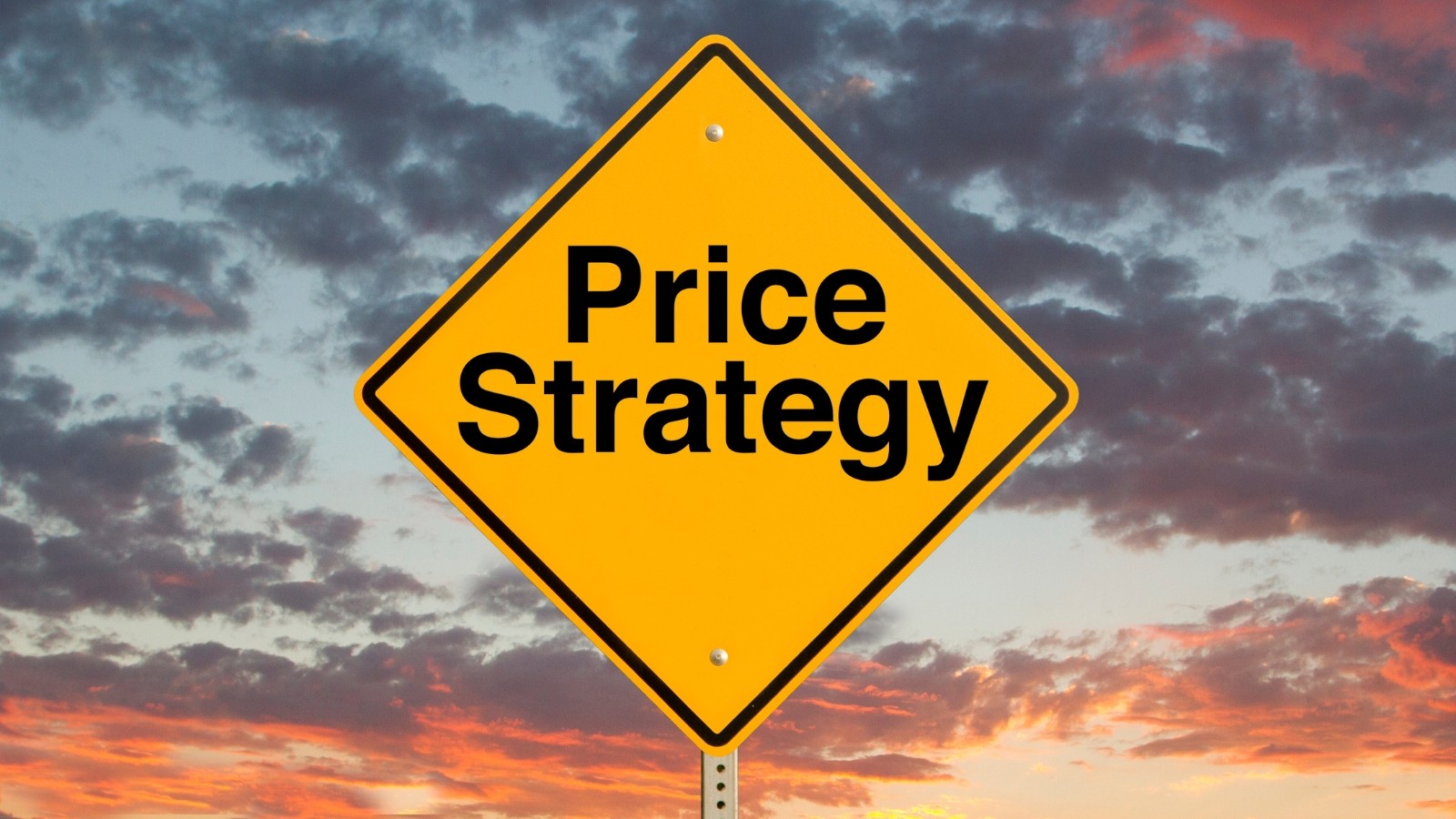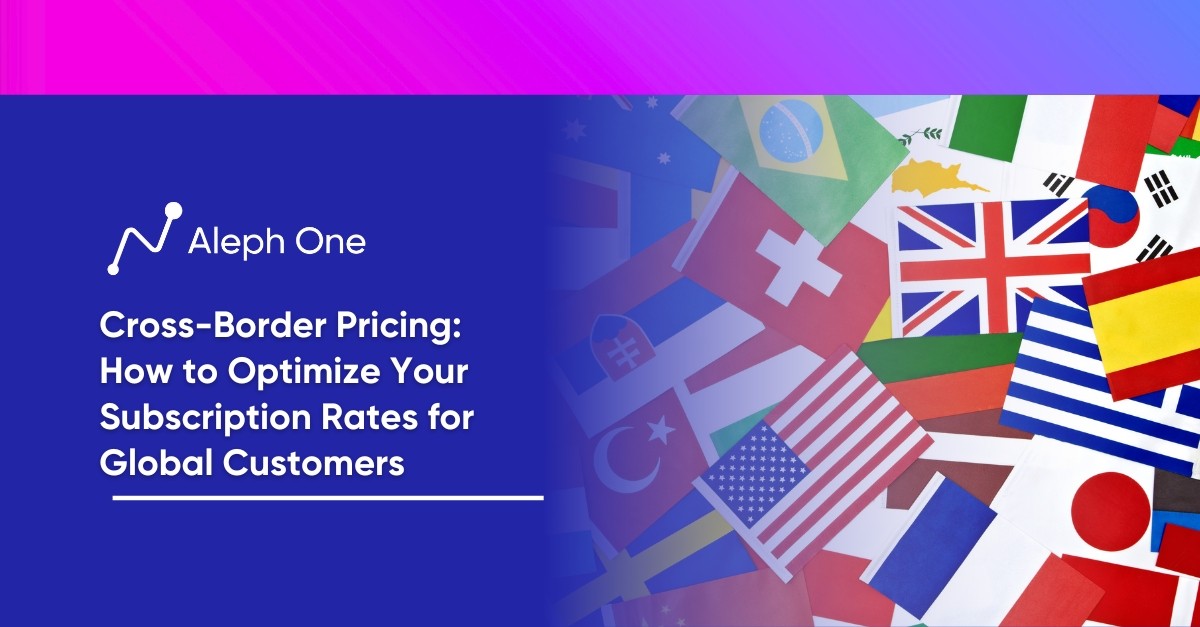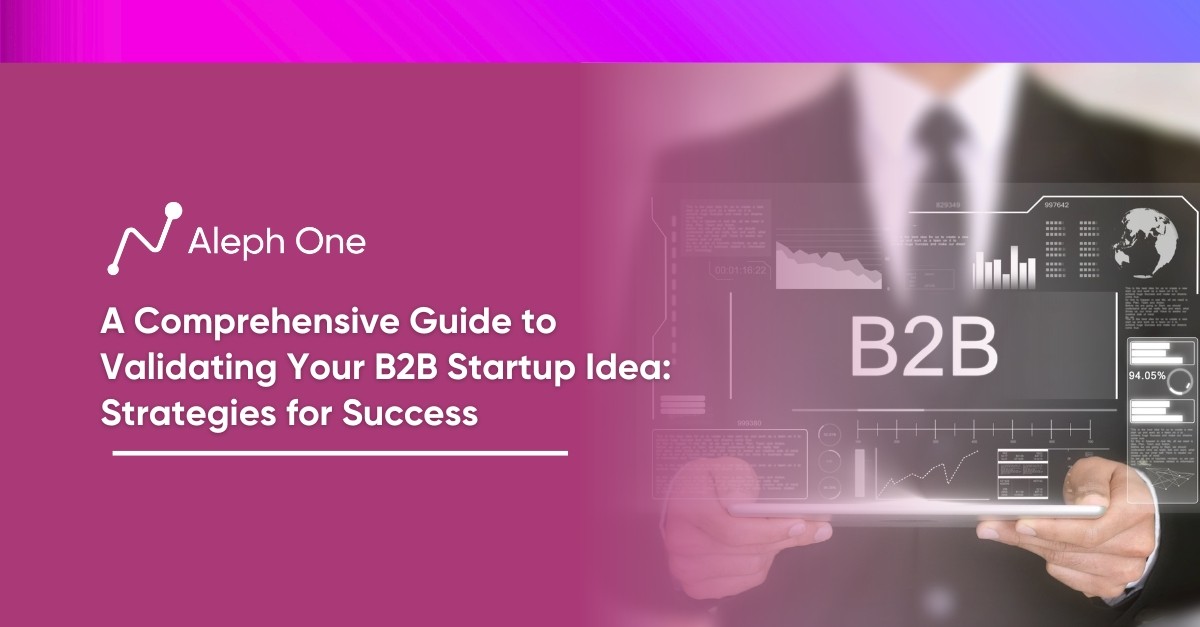Let’s work together to build something amazing. Share your project details and our team will reply to figure out the next steps to your success.

Setting the right pricing model is a pivotal decision for any startup, intricately linked to its growth stage and objectives. This article explores the art and science of choosing the optimal pricing strategy that aligns with your startup’s unique trajectory. Just as a thermometer gauges temperature, we introduce the concept of a “pricing thermometer” to assess whether your pricing approach is too hot, too cold, or just right. Navigating through ideation, validation, efficiency, scale, and expansion stages, we highlight how different stages demand varying pricing temperatures. Through insights from successful examples like Dropbox, Slack, and Zenefits, we unravel how startups can calibrate their pricing strategies to ensure sustained growth and profitability. This article will equip startups with the tools to wield pricing as a dynamic force, propelling their journey toward triumph.

The Pricing Thermometer: Your Startup’s Temperature Check
A startup’s pricing model depends heavily on the company’s growth and maturity stage. Early-stage startups with a new product and small customer base must take a different approach than established companies with steady revenue and growth. Startups can evaluate their “pricing temperature” to determine if their current pricing strategy is too hot, too cold, or just suitable for their situation.
Ideation or Validation Stage – Cool Pricing Temperature
Startups in the “ideation” and “validation” stages should have a cool pricing temperature. They are still testing their riskiest assumptions and developing a viable product. Pricing should be customer-friendly, even free, to attract early adopters and generate feedback. Case in point, Dropbox launched with a free version to gain rapid user growth, then introduced paid plans later.
Efficiency and Scale Stages – Lukewarm or Moderate
As startups move into the “efficiency” and “scale” stages, their pricing temperature should rise to lukewarm or moderate. They have initial traction and want to generate revenue, but they still need affordable pricing for mainstream customers. Currently, many startups introduce “freemium” models with free and paid tiers. Slack and Evernote are companies that have achieved massive scale with freemium models.
Expansion Stage – Hot Pricing
For “expansion” stage startups and beyond, a warm or hot pricing temperature is appropriate. Companies at this stage have a proven product and loyal customer base, so they can afford to charge premium prices to generate profit. They may introduce enterprise plans with customized features and service for thousands of dollars per month. Companies like Zenefits and DocuSign charge high prices for their enterprise software and generate over $100M in annual revenue.
A startup’s pricing temperature depends on many factors, but growth stage is the most critical. Startups should evaluate if their pricing matches their current situation and trajectory. If the temperature is too hot or cold, it may be time to make a change to support sustainable growth and long-term success. Frequently re-checking your startup’s pricing temperature is key to optimizing revenue and growth.
One Size Does Not Fit All: The Pros and Cons of Different Pricing Strategies
There are many pricing strategies startups can choose from, and no one-size-fits-all approach. Startups must evaluate options based on their unique business models and customer bases to determine the optimal approach. Some of the most common strategies include:
Transactional Pricing
Charging customers a one-time fee for a product or service. This is a simple model suited for startups with a single product. However, revenue can be volatile and limited. For example, an ecommerce startup selling physical products would typically use transactional pricing.
Subscription Pricing
Subscription pricing is charging a recurring fee, typically monthly or annually. This creates predictable, recurring revenue but may turn off some customers unwilling to commit to an ongoing subscription. Many SaaS startups find success with subscription pricing.
Freemium
Freemium: Offering a free basic version of a product, then charging for premium features. The free version helps attract many new customers, but conversion rates to paid plans are often low. Freemium works best when the product provides ongoing value and network effects. Examples include Dropbox, Evernote, and Slack.
Enterprise Pricing
Charging premium prices for bulk orders and additional features suited for large business customers. This model typically has a long, complex sales cycle but very high revenue potential. Enterprise software companies like Salesforce and Oracle frequently use enterprise pricing.
Bundled Pricing
Grouping multiple products or services together at a discount. This can increase customer loyalty and lifetime value but reduces flexibility. Companies like cable providers and software suites often bundle pricing.
Hybrid Model
Combining multiple strategies, such as offering a freemium entry-level product, a subscription mid-tier, and enterprise pricing for premium features. A hybrid approach allows startups to reach different customer segments but can be complex to implement and communicate.
Startups must evaluate the pros and cons of different pricing strategies based on their unique situations. An approach well-suited for one startup could be disastrous for another. But with a data-driven decision process, startups can determine the optimal model to drive revenue and growth.
Optimizing Your Pricing Plans: How to Maximize Revenue and Growth
Once a startup has selected a broad pricing strategy, the next step is optimizing their specific pricing plans. Startups must determine the optimal number of plans, which features to include/exclude in each, and the right price points based on customer willingness to pay.
Diversity of Customer Base
The number of pricing plans depends on the diversity of a startup’s customer base. For a wide range of customer types, 3-5 pricing plans are typical. For a narrow, homogeneous base, 2-3 plans are usually sufficient. Startups should segment their customers based on attributes like company size, usage level, and product features needed. Each plan should appeal to one major customer segment.
Features
In terms of features, startups need to determine which are most important to each customer segment. All plans should include core features, while more advanced features should only be offered in higher-priced plans. This incentivizes customers to upgrade to more expensive plans as their needs grow. However, avoid excluding any “must-have” features from lower-priced plans.
Customer Research
Price points are best determined through customer research on willingness to pay for different plan levels. Surveys, interviews, and historical data can all provide valuable insights. Startups should also consider their product’s perceived value compared to competitors’ pricing. Price points should balance affordability for customers with profitability for the startup.
Slack and Asana – Optimizing Pricing Plans
Many SaaS startups have found success optimizing their pricing plans. Slack, for example, offers 3 plans for small, medium and large teams with tiered features and pricing. Asana provides 4 plans from $0 to $24.99 per user based on features like dashboards, advanced search, and team management tools. Their pricing is affordable for most customers but still generates strong revenue at scale.
Startups can maximize their revenue and growth by offering the optimal number of pricing plans at the right price points, with features tailored for key customer segments. Continual testing and data analysis help determine a pricing structure that both resonates with customers and supports the startup’s financial success. With the right pricing plans in place, startups can accelerate their path to profitability and beyond.
Pricing Mistakes That Kill Startups
One of the biggest mistakes startups make is underpricing their product. In a desire to gain traction, startups will often charge too little for their innovative new solutions. This is problematic because it establishes an anchor price in customers’ minds that will be hard to increase over time. It also means the startup is missing out on revenue and profit opportunities that could fuel their growth.
Choosing a Pricing Strategy that Does Not Match the Product
Another common error is choosing a pricing strategy that does not match the startup’s product or target customers. For example, a transactional pricing model may not work well for an enterprise software product with a long sales cycle. Or a high-touch freemium model could be disastrous for a self-service SaaS tool with minimal customer support. Startups must evaluate pricing strategies based on their unique value proposition and customer base.
Frequently Changing Prices
Frequently changing prices confuses customers and reduces trust in the startup. While startups do need to experiment to find the optimal pricing, they should do so strategically before officially launching. Once a pricing model is established, startups should only change prices if absolutely necessary due to major product changes or new revelations from customer research. Even then, they need to clearly communicate the reasons for the change to customers.
Not Explaining Pricing
Not clearly explaining their pricing is a mistake that many startups make. They may bury prices on their website or in complicated pricing pages that fail to highlight the value at each price point. Or they do not educate customers about how their pricing strategy works, for example, the benefits of a freemium model. Confusing or opaque pricing frustrates customers and can significantly hamper sales.
A few startups that failed due to these pricing mistakes include Zirtual, a virtual assistant service that underpriced their offering and couldn’t scale, and Secret, an anonymous sharing app that frequently changed its pricing model and confused users. Startups should study these cautionary tales and avoid making the same errors that led to their downfall. With a thoughtful approach to determining their pricing strategy and model, startups can set themselves up for sustainable success.
How to Determine YOUR Optimal Pricing Model
As a startup, you need to determine a pricing model that is tailored to your unique business. There is no one-size-fits-all approach, so you must evaluate your own product, customers, growth stage, and key objectives to find the right strategy and price points for your company.
Conduct Customer Research
First, conduct customer research to understand your target customers’ needs, pain points, and willingness to pay for your product. You can survey customers, interview them, or run focus groups. Ask them questions about how much they currently pay for similar solutions, how much they would be willing to pay for your product, what features they value most, and what price points would be too high or too low.
Analyze Competitors’ Pricing Models and Plans
See what strategies and price ranges are most common in your industry. Evaluate how their offerings differ from your product to determine if you can charge a premium. Look for any gaps you can fill or weaknesses you can take advantage of. The goal is to find a competitive but profitable pricing position in the market.
Estimate Customers’ Willingness to Pay Based on Data
Estimate your customers’ willingness to pay based on the data you have gathered. Factor in your product’s key features and benefits, the value it provides to customers, and how much they pay for alternative solutions. Come up with a range of price points acceptable to most customers and work for your business model.
Test Different Options
Test different options through surveys, beta tests, and pilot programs. See how customers respond to various pricing strategies and plans. Check if the prices you had in mind actually match what customers are willing to pay in practice. Be open to adapting your pricing based on feedback and any issues during testing.
Finally, choose an initial pricing model and set of plans that you believe will maximize revenue and growth over the short and long term. Continue optimizing and evolving from there based on new customer data and insights. The key is to make data-driven pricing decisions at every stage of your startup’s journey. You can determine a pricing model that fuels your startup’s success.
Pricing is a Journey, Not a Destination
A startup’s pricing model should not remain static as the company grows and evolves. Pricing is a journey that needs to adapt over time based on changes in the business and market. Startups must continually re-evaluate their “pricing temperature” and strategies based on new data and insights.
Determine if Pricing Matches Value Delivered to Customers
As a startup’s product improves and expands, the company needs to determine if their pricing still matches the value delivered to customers. If new features significantly increase the product’s value, it may merit a price increase. However, startups must be careful not to raise prices too quickly, especially for existing customers. They can consider offering loyalty discounts or grandfathered pricing for long-time customers.
Competitive Changes
Competitive changes also require startups to re-examine their pricing. If competitors launch similar products at a lower price, the startup may need to adjust their pricing to remain competitive. They can choose to lower prices to match competitors or highlight their product’s superior features to justify a price premium. Startups should avoid frequent price wars, but they must respond to major competitive threats.
Identify New Customer Segments
As a startup’s customer base grows and evolves, the company may identify new customer segments with different needs and willingness-to-pay. The startup can consider new pricing plans and strategies tailored to these customer groups. For example, a startup may initially have a one-size-fits-all pricing model but realize that enterprise customers require a higher-touch sales model and customized pricing. The company can then develop enterprise pricing to match.
Adapt Pricing to Support Business Goals
Finally, startups must adapt their pricing to support their overall business goals. If a startup aims to gain market share, lower pricing may help acquire new customers. If the goal is profitability, the startup may increase prices and focus on higher-value customers. If seeking rapid growth, a freemium model could boost expansion. Startups must determine how pricing can align with and enable their most important goals at each stage.
Startup Pricing is a Journey that Evolves Overtime
Startups must view pricing as a continuous journey that evolves over time. By re-evaluating their pricing temperature and model based on changes in the product, competition, customers, and company goals, startups can ensure their pricing always supports sustainable growth and success. With frequent analysis and adaptation, startups can thrive even as their business and markets mature.
How does a startup's pricing model adapt as it moves from one stage of growth to another?
A startup’s pricing model generally evolves alongside its growth stage. During the “ideation” and “validation” stages, startups should typically maintain a cooler pricing approach to attract early adopters and gather feedback. As the startup enters the “efficiency” and “scale” stages and gains traction, the pricing begins to moderately increase, often through a freemium model that balances customer acquisition with revenue generation. Finally, in the “expansion” stage and beyond, the startup should have established a strong customer base and can adopt a warm or hot pricing approach that taps into premium prices for maximized profits.
What are some common pitfalls startups can fall into when trying to determine their pricing model?
Some common pitfalls that startups can face while determining their pricing model include underpricing their products, selecting a pricing strategy that doesn’t match their product or target audience, frequently changing prices which can confuse customers, and not effectively communicating their pricing. Any of these missteps can prove harmful, leaving money on the table, alienating potential users or causing mistrust amongst existing customers. Being mindful of these pitfalls and adopting a thoughtful pricing strategy can prevent such issues from arising.
How can startups adapt their pricing model over time to ensure it aligns with their overall business goals?
Adapting a pricing model over time requires continuous reflection and re-evaluation. This can be done through regular reviews of the product improvements, analysis of changes in competition, recognizing shifting customer demographics, and the changing overall business goals. Pricing should align with these variables: for instance, with product enhancements, the price might need to be increased; in case of increased competition, pricing might need to be justified against superior features or lowered to remain competitive, and so on. Similarly, pricing should be adjusted to accomplish business goals as they evolve, thus allowing pricing strategies to enable the startup’s journey to success.
Get the latest news and updates from Aleph One in your inbox.



